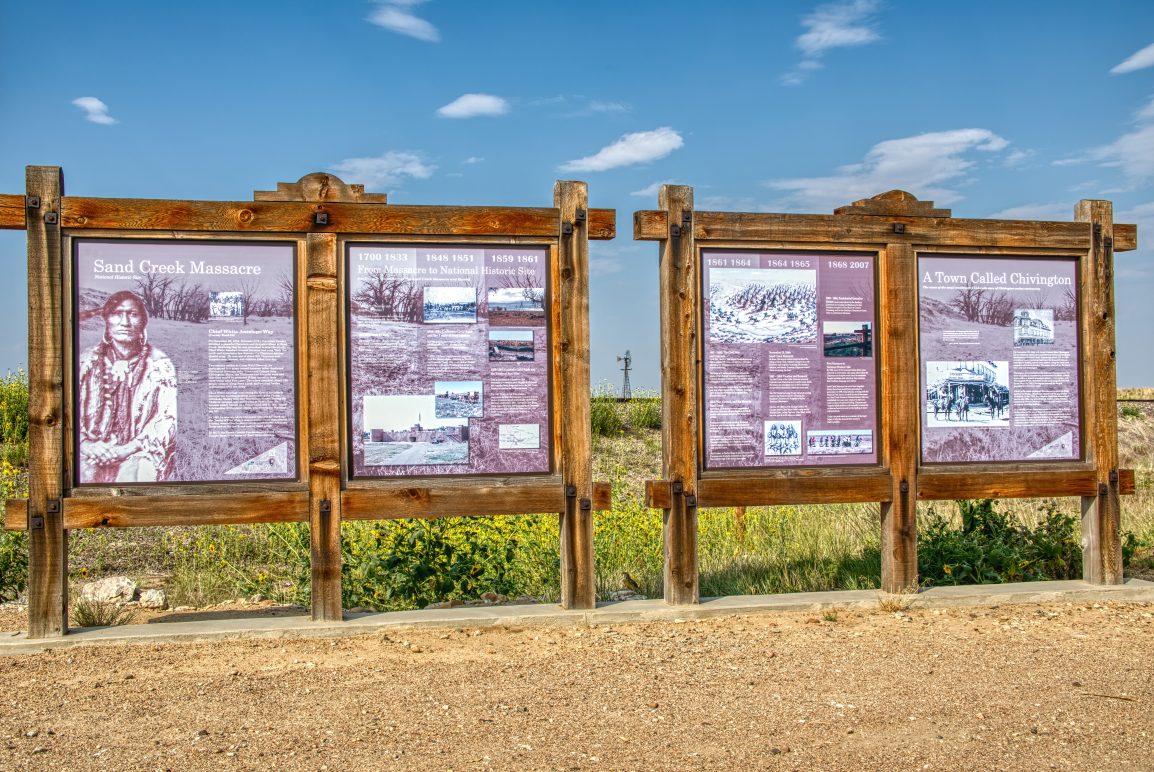We hold this truth to be self-evident: No man is truly equal to another as long as the system that placed one being above another continues to exist.
This is not a call for anarchy, but a call for recognition – a call for action.
One of Many Massacres
On November 29, 1864, the U.S Army massacred approximately 750 Cheyenne and Arapaho peoples in Colorado. The army was led and the attack ordered by Colonel John M. Chivington. The Cheyenne and Arapaho “…believed they were under the protection of the U.S. Army on their assigned ratified treaty lands…” (Sand Creek Massacre Foundation). They were not.
Chivington’s army attacked and killed hundreds of people over the course of seven hours. No prisoners were taken; women, children, and men were shot point-blank. Reports by officers suggested 300-800 people were killed and “downplayed or denied that women, children, and elderly noncombatants were included” (Sand Creek Massacre Foundation) in the count. Thirteen Cheyenne chiefs and one Arapaho chief were murdered. This event is known as the Sand Creek Massacre, formerly noted as a “battle.”
The Aftermath
In 1865, the War Department began an investigation of the event. “… the truth is that he [Col. Chivington] surprised and murdered, in cold blood, the unsuspecting men, women, and children on Sand Creek,” said the Joint Committee investigating the massacre.
In 1865, the Little Arkansas Treaty was created, in which the “…government effectively assumed responsibility for the Massacre by committing to compensate those who lost property at Sand Creek” (Sand Creek Massacre Foundation). Were descendants paid these reparations? The majority were not.
Four years post-Massacre, the Cheyenne were attacked again on Washita Creek. Chief Black Kettle survived the Sand Creek Massacre only to be murdered in this surprise attack in his own village along with 30-60 Cheyenne peoples.
Chief Black Kettle once said, “I once thought that I was the only man that persevered to be the friend of the white man, but since they have come and cleaned out our lodges, horses, and everything else, it is hard to believe the white man anymore.”
Present Day
Now, 158 years later, the National Park Service (NPS) bought an additional 3,478 acres of land to be used to “…protect the historic site and sacred Tribal lands”, says Janet Frederick, the Sand Creek Massacre National Historic Site Superintendent. Knowing this event is crucial. The story of our nation does not begin when the white foot stepped onto the land. And the beginning of “white civilization” does not mark the end of Indigenous existence, as is so often implied.
Indigenous history is an afterthought to the white mind. It’s not in the history books. It’s told only as an addition to the white history of America.
As Patrick Spottedwolf, a chief with the Southern Arapaho tribe, said “This [in reference to the additional land dedicated to the Sand Creek Massacre National Historic Site] is great. A step forward. It’s time to lift up our history and get it in the books and remember what happened to our people.” To tell the truth of our nation is to tell the truth of the inhabitants, and the Sand Creek Massacre “forever changed the course of the Northern Cheyenne, Northern Arapaho, and the Cheyenne and Arapaho Tribes” (Secretary Haaland, Secretary of the Interior).
To deny this event is to deny the history of the United States. The Sand Creek Massacre is a representation of the extreme racism, prejudice, and power the whites held against Indigenous peoples. Understanding this event means understanding how the government is set up, what roots it really holds, and how it continues to affect Indigenous peoples. We have made new acts, signed new bills, changed some minds, and more. But fundamentally, we are living under the same government capable of the atrocities it has committed or allowed to be done by the American peoples.
“We were wrong, harmful and in all too many cases like this one, we were deadly” (Senator Sam Brownback). So much of US history is told incorrectly. Expansion of the Sand Creek Massacre National Historic Site allows for a chance to change that.
Moving Forward
However, there is much more the US could be doing to recognize the destruction and genocide the US committed toward Indigenous nations.
On July 24-29, 2022 Pope Francis apologized for the Catholic Church’s role in the Canadian Indian residential school system. Many citizens of the U.S have called for a similar “Pilgrimage of Penance”, as the Pope calls it, to occur in America for the Federal Indian Boarding schools that were responsible for the cultural genocide of Indigenous children. The steps America takes towards acknowledging its ‘sins’ are the steps that will define America in the coming years.
An apology changes nothing of the loss, but if for nothing else it shows that America is not the same as it was. If we can even say that.
Sources:
https://www.sandcreekmassacrefoundation.org/history

